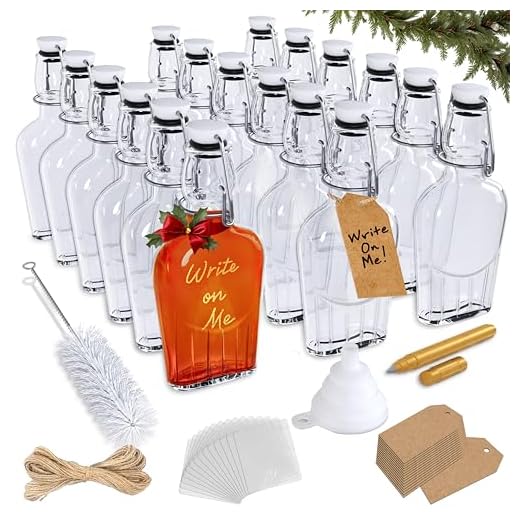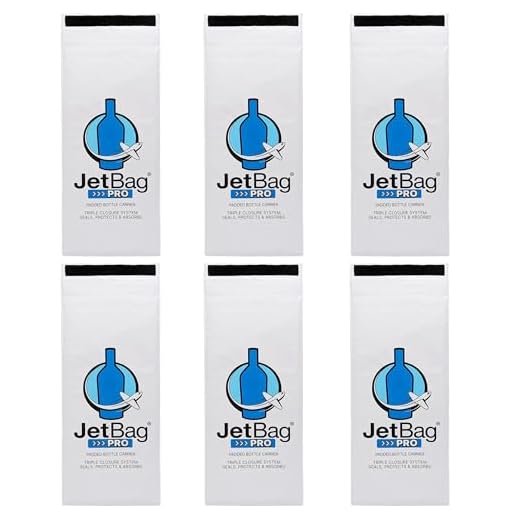



Yes, the inclusion of beverages containing alcohol within your registered bags is permissible, given that specific guidelines are adhered to. Most airlines permit the placement of bottles in the hold, with quantity limits typically set at 5 liters for spirits exceeding 24% ABV, and larger quantities for those lower in alcohol content.
Ensure each container is securely sealed to prevent leaks. Place items in cushioned packaging or original boxes for added protection against breakage during transit. The total weight of your belongings must also comply with the airline’s restrictions, so plan accordingly to avoid extra charges.
Familiarize yourself with both airline regulations and the laws of your destination. Some countries impose restrictions or additional duties on imported drinks, which could complicate your arrival. Researching beforehand will aid in a smooth experience upon landing.
Transporting Alcohol in Checked Bags
Ensure compliance with regulations specific to the airline and destination regarding the inclusion of beverages in your luggage. It is advisable to check the maximum volume permitted for each item, as it can vary substantially. Many airlines allow certain types of spirits, wine, or beer, typically limited to a specific alcohol content.
Packaging Recommendations
- Utilize sturdy packaging to prevent breakage.
- Consider bubble wrap or packing peanuts for extra cushioning.
- Always seal containers securely to avoid leaks.
Security and Liability
- Check with airport security for any specific rules regarding liquid transportation.
- Understand that liability for breakage lies with the passenger; ensure proper insulation.
- Using a best luggage key lock can help secure your belongings.
Understanding Airline Regulations for Alcohol Transport

Maximum liquid capacity for potent beverages in baggage often varies by airline. Generally, containers must not exceed 5 liters for liquids over 24% alcohol by volume. Sealed bottles are preferable, as open containers could result in leakage and spillage.
Some carriers have restrictions on specific beverages. For instance, champagne, certain spirits, and liqueurs may have additional requirements. Always verify with the airline’s guidelines before travel to avoid issues at check-in.
Check country regulations too, as customs may impose limits on quantities that travelers can bring into a destination. In some cases, duty-free purchases might be allowed, with package integrity being critical for compliance.
Consider packing strategies; cushioning the bottles to prevent breakage is beneficial. Utilize clothing or padding materials within the suitcase to minimize movement and impact during transit.
In rare circumstances, airlines might deny boarding to passengers with excessive amounts of intoxicating beverages regardless of regulations. Staying informed and prepared can alleviate potential complications during travel.
Quantity Limits for Alcohol in Checked Bags
Transporting beverages in bags is subject to specific quantity restrictions set by airlines and country regulations. Typically, the maximum allowable volume of liquid is 5 liters per person for beverages with an alcohol content of up to 70%. Beverages exceeding this alcohol content usually cannot be carried at all.
General Guidelines
Be sure to check the guidelines provided by your airline, as they may impose stricter limitations. Additionally, imports may be regulated by the destination country, which could further limit the amount permitted for personal use.
Summary of Common Limits
| Alcohol Type | Maximum Volume |
|---|---|
| Alcohol up to 24% | 5 liters |
| Alcohol between 24% and 70% | 5 liters |
| Alcohol over 70% | Not permitted |
Before traveling, also consider the customs regulations by visiting an official government website or consulting resources for additional insights. For specific and detailed information, check for resources like best employment services limited umbrella.
Packaging Requirements for Liquids in Luggage
Liquids should be securely packaged to prevent leaks and breakage during transit. Opt for bottles with tight-sealing caps, ideally made of durable materials such as glass or high-density polyethylene.
Each container must not exceed a specified volume, typically set at 3.4 ounces (100 milliliters) if traveling with a carry-on. For larger quantities in hold baggage, use robust containers that do not exceed the airline’s weight and volume restrictions.
Consider utilizing padded bags or bubble wrap to further safeguard your items from impact. It’s advisable to place each bottle in a separate plastic bag to contain any spills. Double-bagging adds an extra layer of protection against potential leakage.
Label all containers clearly to identify their contents, as some airlines may require identification for certain liquids. Keep your receipt handy as proof of purchase, especially for items exceeding standard allowances, to facilitate smoother handling during inspections.
Review the specific airline’s regulations, as different carriers may have unique stipulations regarding liquid goods. Proper compliance with these guidelines minimizes the risk of damage and ensures a more seamless travel experience.
Prohibited Alcohol Types and Exceptions
Specific categories of spirits are forbidden from being included in personal baggage. Familiarize yourself with these restrictions to avoid potential issues during travel.
Types of Prohibited Spirits
- Alcohol with an alcohol content exceeding 70% ABV (alcohol by volume) can lead to significant hazards and is generally not permitted.
- Bulk quantities intended for commercial use may face restrictions. Review regulations carefully before attempting to fly with larger shipments.
- Some countries have laws against transporting specific regional products, such as certain homemade spirits or specialty brews.
Exceptions to General Rules
- Duty-free items purchased directly at international airports may bypass some restrictions but subject to destination regulations.
- Beverages contained in sealed original packaging are often treated differently; however, checking destination rules is advisable.
- Transporting small gift samples or personal consumption amounts might be allowed based on airline policies, which can vary widely.
Always verify the airline’s specific guidelines and the regulations of both departure and destination points to ensure compliance and a smooth travel experience.
International Transport Rules for Alcohol
Check the regulations of your destination country regarding the importation of spirits before departure. Different countries impose specific allowances on the amount permitted. For example, many European nations allow up to 1 liter of spirits over a certain alcohol percentage without incurring duties.
Country-Specific Guidelines
Countries like Australia and Canada have strict guidelines, often allowing travelers to bring a limited quantity, typically around 1 to 2 liters, without extra taxes. In the United States, non-commercial travelers may bring in up to 1 liter per person, but states may impose stricter rules, so always verify the local laws before traveling.
Customs Declarations

Declare any purchased beverages upon arrival to avoid fines or penalties. Countries like the UK have clear customs regulations where exceeding allowances can lead to confiscation and significant fines. Always keep receipts as proof of purchase, especially for higher-value items.
For further insights and tips on household products that enhance your travels, check this best half load dishwasher find the perfect one for your needs expert reviews.
Tips for Packing Alcohol Safely in Checked Luggage

Wrap bottles in bubble wrap or clothing to protect them from breakage. Make sure each bottle is individually secured, minimizing movement during transport.
Use a sturdy container or box specifically designed for transporting liquids. Hard-shell suitcases provide extra protection, while soft-sided baggage may require additional internal padding.
Ensure that lids are tightly sealed, and consider using tape to secure caps if necessary. This can help prevent leaks and spills.
For glass bottles, place them in the middle of the bag, surrounded by soft items like clothing. This cushioning helps absorb shocks during handling.
Label your bag clearly, indicating its contents. This can assist baggage handlers in treating it with care.
If traveling internationally, check restrictions for the destination. Some countries have specific regulations regarding the volume or type of beverages allowed.
Calculate the total volume of liquids to avoid exceeding airline limits. Divide larger bottles into smaller containers if needed.
Before heading to the airport, inquire with the airline about specific requirements or suggestions for safely transporting beverages.
Consider bringing a portable, foldable cooler for additional protection if transporting multiple bottles. This can keep beverages cool while adding an extra layer of security.








